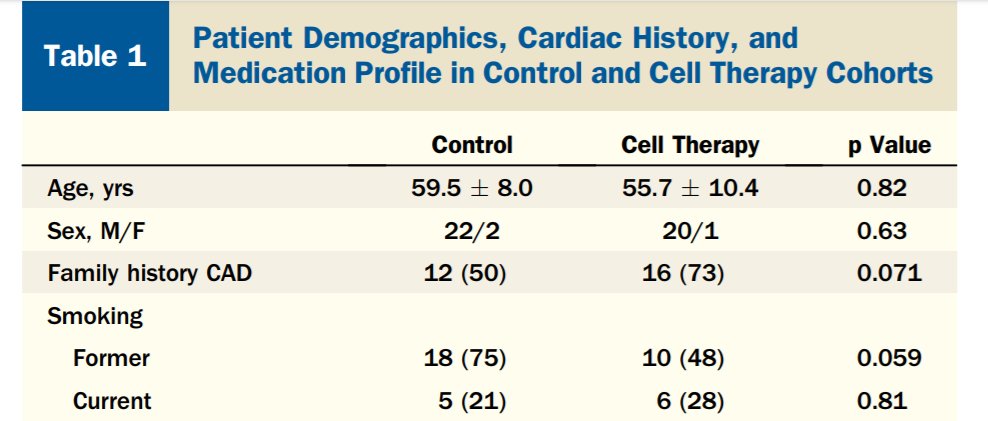================
Lazarus revisited
[Tweetorial from ORBITA-hq: "Making cardiologists think again"(TM)]
Please retweet to cardiology fellows or anyone who might be interested to practice data interpretation.
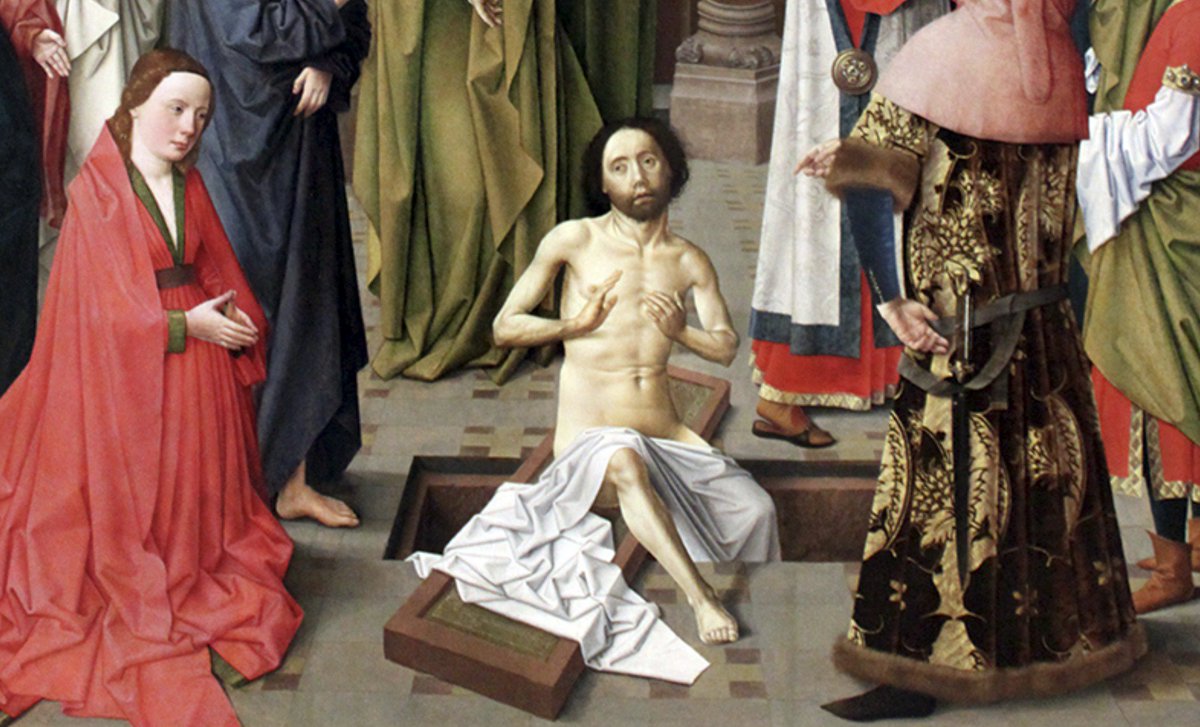

3000 patients

Within 2 years I had seen it perhaps a dozen times, in lectures across the world, to prove the unassailable merit of viability testing.
Here it is. Fall backwards in awe ye skeptics.
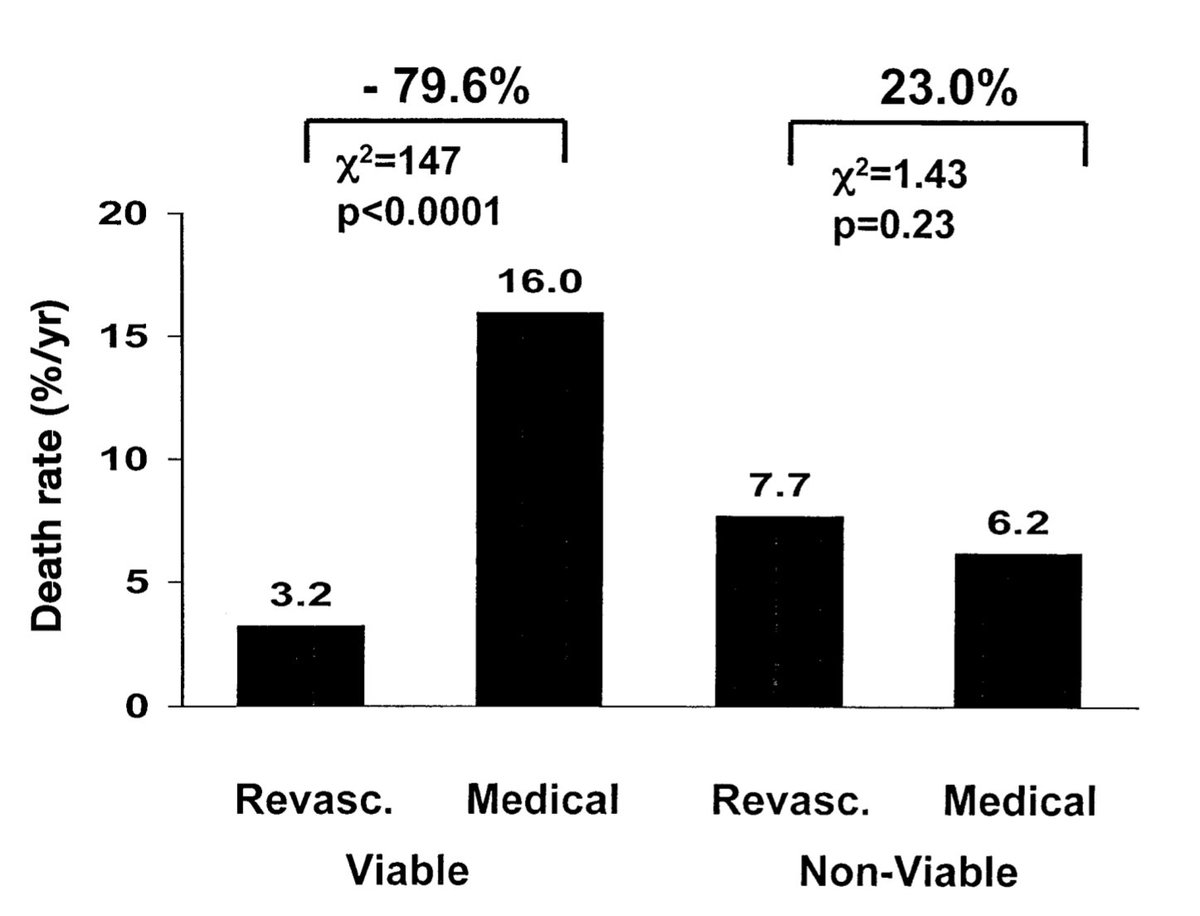
(Please answer: this subject is at the expense of the #ORBITA-ACME shootout, making Anish Koka unhappy.)
If I have a patient WITH viable myocardium, revasc'ing them does what to annual mortality?

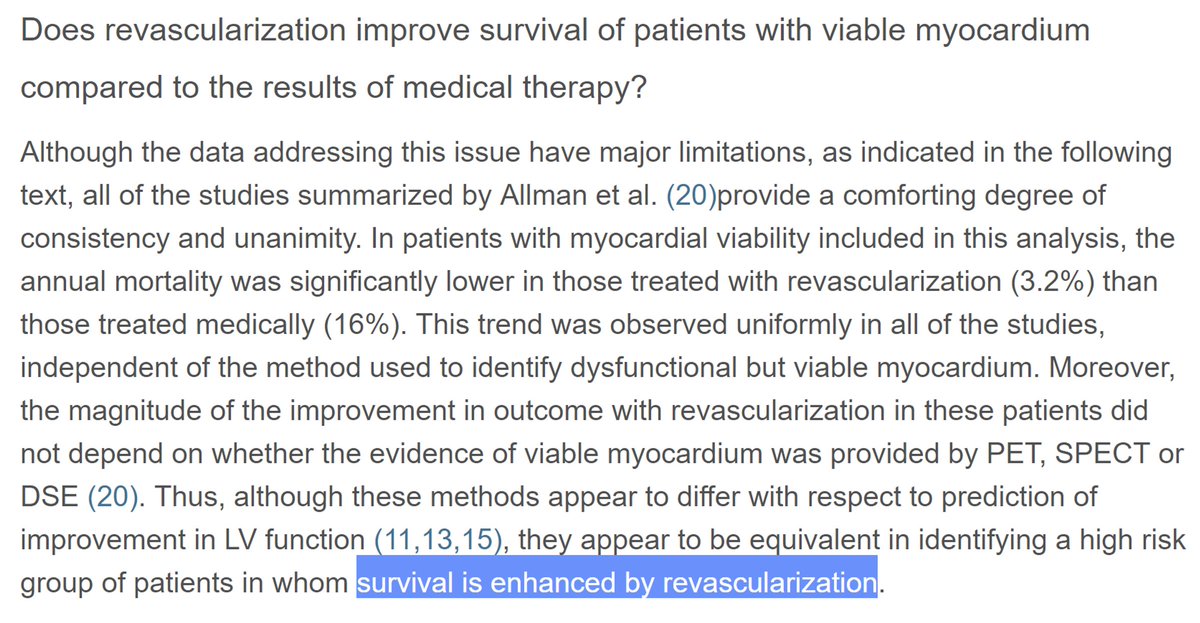
The first 4 answers show why this sort of data interpretation practice is so needed.
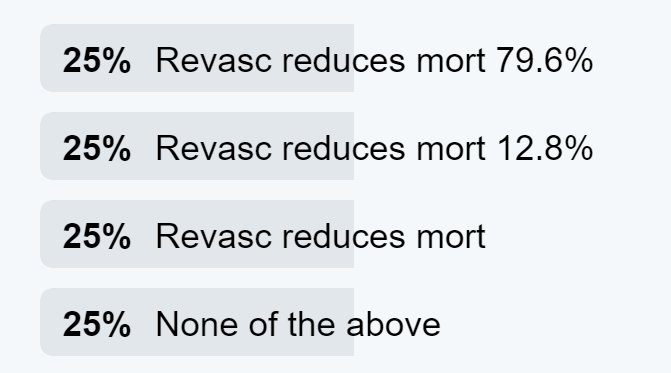
They have two feelings about them.
(B) "Oh they are very good, thank you for doing them. A great help!"
"Did you get many wrong?"
"Well I didn't vote, I didn't want to look stupid"
Those who are struggling, worried or are sent to see me because others are worried, are in (B).
If you want to learn, commit to an answer. NOBODY knows what you voted.
If right, shout Hooray.
If wrong, shout, "Double Hooray - I've learned something; many days go by where I don't."
If don't agree wrong, DM me, as you will not be the only one. (And I may be wrong!)
How can two such different figures both be equally right?
Let's do a thought experiment!
1000 patients go into the BARTTELS arm of good stuff
The other 1000 draw the short straw, they get @richardbogle BOGLED.
Just 32 patients die with BARTTELS
A whopping 160 patients die under BOGLING
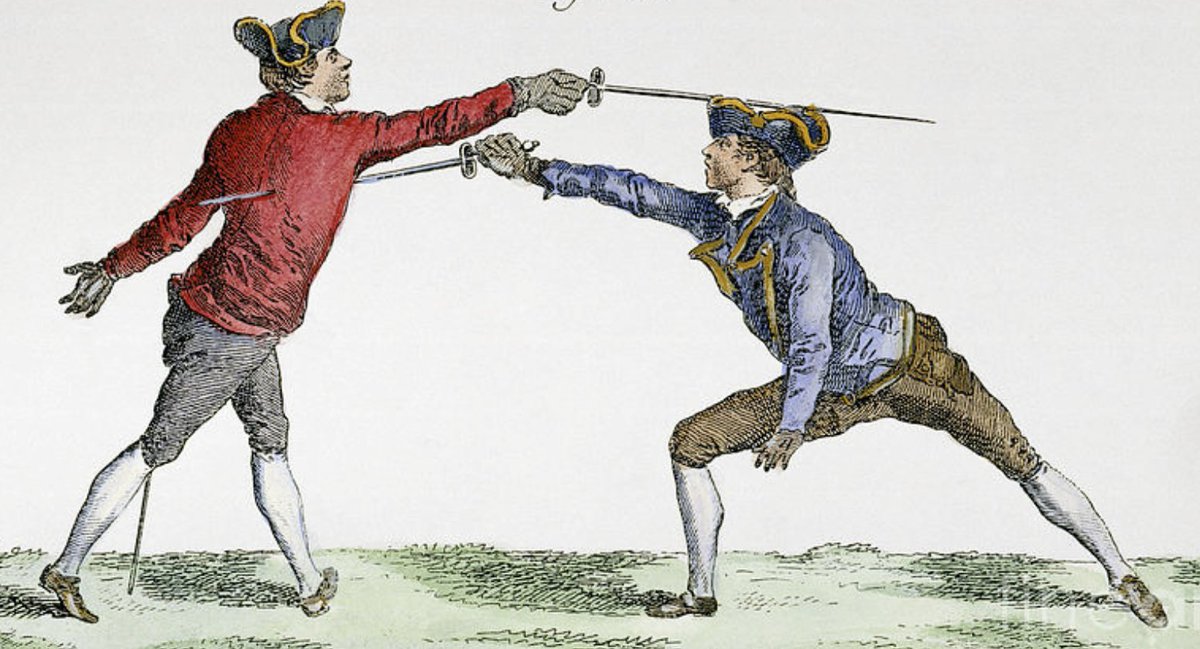
Richard Bogle dutifully attends all 160 funerals of his patients. Keeps him busy that year (2017).
Just about now he is thinking to himself:
"How many of these funerals could I have avoided if I had only BARTTELed?"
Divide by something, and mult by 100%. But divide by what?
Divide by 160 (the number of funerals he attended)?
Or divide by 1000, (the potential number of funerals he may have had to attend)
RELATIVE means as a proportion of how many deaths in the OTHER ARM.
ABSOLUTE means as a proportion of how many PATIENTS YOU HAD ALTOGETHER in your arm.
What is the RELATIVE risk reduction of BARTTELSing?
Statin trials for event prevention show this elegantly with 10s of thousands of randomized patients
(If not tried, please have a go at the statin tweetorial
)
What matters to patients is ABSOLUTE risk reductions. If deaths are rare, even (say) halving them, doesn't actually prevent many of the PATIENTS TREATED from dying.
"If you're not going to die, I can't save your life."
Beware that for chronic conditions, the ABSOLUTE is heavily dependent on the time window. Over a short time, the ABSOLUTE benefit of (say) ACEi for HF is tiny
Please note that Richard Bogle has been my friend for about 2 decades. We trained together and I frequently wind him up, although I haven't seen him in person for over 10 years.
Back to the miracle of viability.
Reminder:
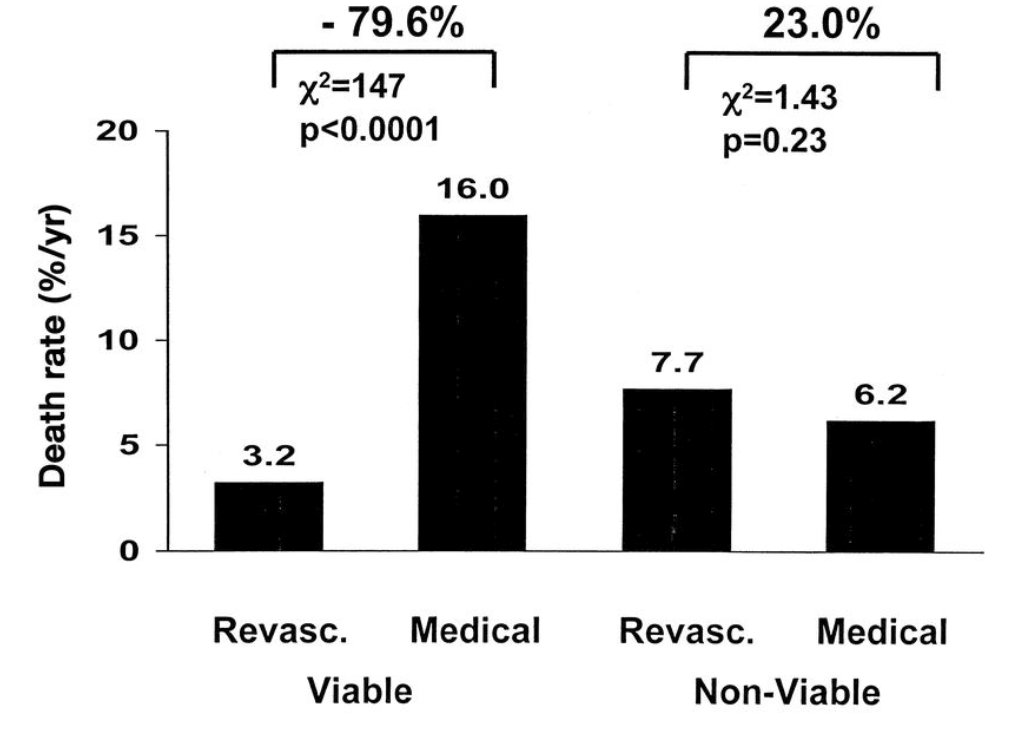
"This 3000 patient meta analysis shows that:
(A) In viable myocardium, revasc improves survival 79.6%.
(B) In non-viable myocardium, revasc doesn't help survival significantly."
What do you think of (A)?
Based on the above meta-analysis of 3000 patients, what is your best estimate of the RELATIVE RISK REDUCTION in cardiac mortality?
If you did a single, well-conducted, carefully-controlled randomized controlled trial, what RRR would you expect?
So just use your previous estimate of the RELATIVE risk reduction.
No trick here.


